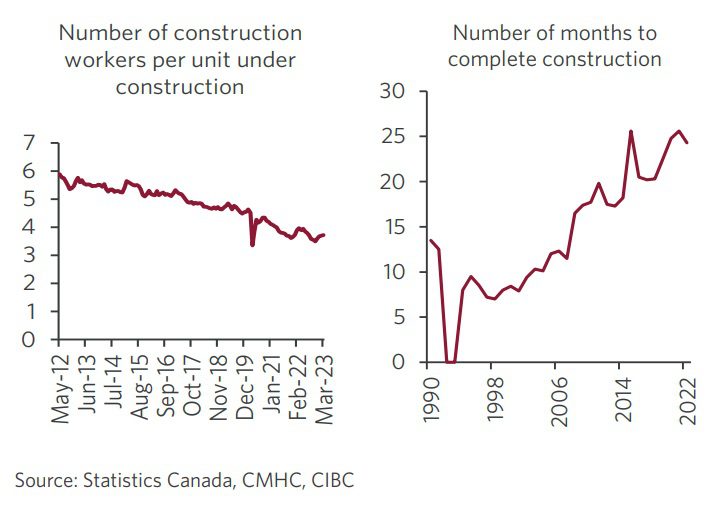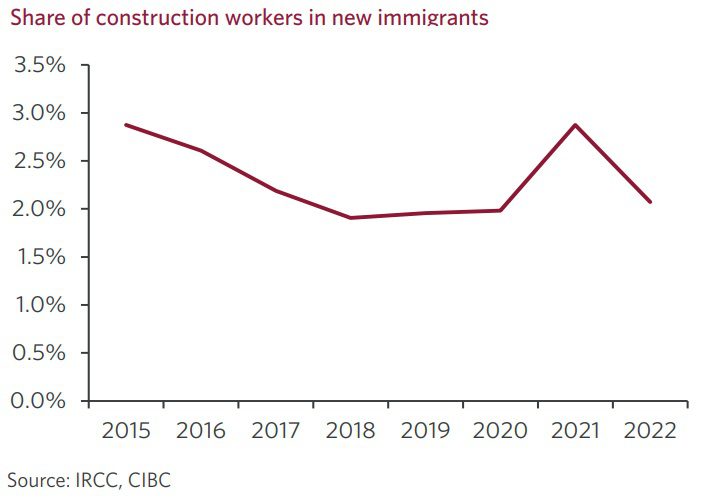Did I ever tell you that I won the “shop award” in 1994?
Friends, family, and colleagues are groaning right now as they read this. It’s an inside joke.
It’s one of those things that I started kidding about in my early 20’s, which was the early-2000’s, and thus wasn’t all that long removed from 1994.
But then as time began to pass, 1994 got further and further away.
At the onset of this inside joke, some would remark, “You’d better be careful or one day, you’re gonna be one of those old men telling stories from thirty years ago.”
Yes. I’d better be careful. Or…
But I’ve always believed in self-deprecating humour. My father used to say, “You have to be able to laugh at yourself,” and thus I like to say things that subject myself to ridicule.
Those that watched Married With Children in the 1980’s and 1990’s recall Al Bundy’s sports claim to fame that he repeated over and over throughout the series.
Remember?
What was it?
The first person to respond with the correct answer gets the prize: our utmost respect.
Unfortunately, when I joke with my wife, “I won back-to-back Leaside Soccer Association MVP’s in 1994 and 1995,” I’m sounding a lot like the Al Bundy that I made fun of………..circa 1994 and 1995.
Now, just to triple-down on the theme of being an old man stuck in the past, let me say this: the day that they closed the ‘shop’ and took out the bandsaws, lathes, and drill presses to replace them with computers, monitors, and keyboards was the day that kids ceased to be taught REAL life skills!
I mean, take the jigsaw out of a 13-year-old’s hands and replace it with a keyboard, and who knows how that could alter the course of the future!
In any event, “Industrial Arts,” as it was called, helped make me the person I am today. And yes, I did win the “Shop Award” at Bessborough Public School for the 1993-94 school year, not that I’ve spent the last thirty years bragging about it, or anything.
And before you ask, no, I don’t have photographic evidence.
Wait…
…yes I do…

That’s a photo of a photo, by the way, hence the quality.
Some mothers know how to use scanners, but mine knows how to use her iPhone.
All y’all’s under thirty-years-old don’t know what it’s like to have all these printed photos in binders at your parents’. Once upon a time, we didn’t have a decade’s worth of photos in the Cloud…
Now, before I run the risk of taking this from a funny skit about being (slightly) old(er) to a downright example of forgetting where I was going with this, let me get to my point.
Being raised in the time that I was, part of growing up meant learning how to use a hammer, screwdriver, drill, saw, sander, router, grinder, drill press, bandsaw, and oh yes – the thing I still dream about, the wood lathe. I don’t know if society would allow 11-year-olds to use power tools that can cause major injury (Jeff Beamish and Dan Heilbrunn got the worst of the bandsaw accidents in my day…), but back then, it was necessary learning.
I suggest in jest that ripping out the shop for a “computer lab” wasn’t prudent, but it was a sign of the times, and it happened the year after my younger brother kept the family proud by winning the shop award in 1995-96.
Nevertheless, the days of getting a job on the line at a factory and owning a house, coming home to kids, Bobby and Susie, and wife, Sandy at the end of a long day, having Spot the dog bring your slippers, and living a lavish life on a peasant’s salary were already waning back then.
I’ve told this story before, but when I was in Grade 12 and we were all deciding which universities to apply for, a guy in my class named “Rob” said to me one day, “This is such bullshit.”
Over the P.A. system, we heard, “Grade twelve students, please note that York University, the University of Toronto, and the University of Guelph will be in Room 100 today at 1:00pm.”
I asked Rob, “What‘s bullshit?”
He said, “This school is only interested in universities coming here. Where are the colleges?”
I didn’t know the difference at the time. A “college,” in my mind, was simply the American equivalent to our “university.”
But Rob explained that Humber, Sheridan, Seneca, Centennial, Ryerson (before it was a university and before the name was canceled…), George Brown, and other “colleges” were just as important to the future development of Leaside High School students, but none of them were being invited to present like Western, Guelph, McMaster, McGill, and other universities.
I asked Rob, “What’s the difference? I mean, like, what are you looking for?”
Rob, in a moment of maturity that can’t be understated, looked at me and said, “Do you think I’m going to university to learn business or engineering? Am I going to get a Master of Science? Fuck no. I need to learn a skill, dude. Like how to use a soldering iron so I can be a plumber, or like, what the hell an electrician does. I need to learn how to take apart and put back together the engine of a car or something.”
And that just might be the single-most intelligent thing I ever heard come out of another student’s mouth in all my time at that school.
At that time, whether it was the teachers, the parents, the administration, the larger school board, or just society in general, everybody was being pushed into university, not college.
Why?
Because in university, you get a degree. In college, you “only” get a diploma.
This, of course, was the start of kids spending four years in school to graduate with a Bachelor of Arts in nothingness, who then had no clue what to do with their lives, no life skills, and if they weren’t backed by middle-class parents (or better), then they were already behind in the game of life.
Meanwhile, those who went to college and learned a trade were already making money, were in demand, and had a chance of becoming a successful business owner one day.
One kid I went to high school with is a multi-millionaire today because he went into “the trades,” as it was called back then, started a business, franchised, and now spends six months of the year in Europe. He puts me to shame. Me and my university degree that all the teachers and administration held so near and dear.
So, what’s changed since then?
I’m not asking rhetorically. I’m out of touch. My kids are six and three, respectively.
But I will say, based partially on hearsay and observation, and partially on reports like the one I’m going to share, that we do not have nearly enough “kids today” going into skilled trades.
What 19-year-old says, “Mom, dad, I want to be a sheet metal worker?”
A smart one, probably. But as the sarcastic and cynical version of that question goes, I just don’t think there are many kids like that.
On Monday, we talked about the BMO Economics report that painted a very bleak picture of how to solve the “housing crisis.” In fact, there weren’t really any solutions proposed, and the report kind of concluded with a veiled “We’re all screwed theme.”
One of the points I glossed over because I knew I would come back to it today was with respect to the lack of construction workers available and how that impacts our ability to double or triple supply in our market, overnight, as the politicians have suggested.
Recall this statement in the BMO Economics report:
“While most will argue for a supply-side fix, our longstanding view has been that it’s wishful thinking to believe that an industry, already running at full capacity, can simply double output in short order, flood the market with new units and bring prices and rents down.”
How would we expect output to double?
Moreover, what would we need in order for output to double?
We would need double the number of developers, or double the capacity for existing developers.
We would need double the amount of approved building sites, and double the amount of civil servants to oversee and approve new developments.
And of course, we would need double the amount of construction workers to actually build the damn houses!
Here’s where today’s economic report comes into focus:
CIBC CAPITAL MARKETS
“If They Come You Will Build It – Canada’s Construction Labour Shortage”
June 20th, 2023
By: Benjamin Tal
Click on the link to read the full report, but let’s go through some important sections.
“CMHC suggests that we will need an extra 3.5 million units by 2030 to restore affordability, and the province of Ontario is calling for a doubling in the annual pace of housing construction in the province to 150,000.”
And there we see that word again: doubling.
We need to double the annual pace of housing construction.
But how?
Olivia Chow won the mayoral election on Monday night. Does she have the capacity to help? Is it within her purview, or that of city council? Do they have the funds?
Here’s more:
“As big as those numbers are, the real gap is even larger, as official figures (upon which those estimates are based on) grossly undercount housing demand by students and non-permanent residents, as we have illustrated in previous research. Even worse, the gap is growing with every day that passes without meaningful action.”
Alright, so then 3,500,000 new units by 2030 is more like 4,000,000? Or more?
But as the topic of the report goes, Mr. Tal points directly at the number of construction workers, or rather the lack thereof:
“It is hardly a secret that the industry needs more workers, and fast. Ask any developer about supply issues and the availability of labour usually tops the list. And there is no shortage of statistical evidence of that shortage. With no less than 80k vacancies in the industry, the vacancy rate is at a record high and a full percentage point above the national average. More than half of that demand is for specialty trades contractors. The wage mechanism is clearly reflecting that reality, with average wages in construction rising notably faster than in the economy as a whole.”
Mr. Tal notes that increased demand and rising wages have resulted in workers moving positions more frequently.
This isn’t unique to construction, of course.
In recent years, we’ve seen far less “loyalty” among younger workers who switch jobs more frequently, often for modest pay raises.
HERE is a Forbes article that links switching jobs to higher pay.
But the average job tenure in the construction industry is now at an all-time low and the trendline is pointing straight down.
Here’s another interesting point:
“What’s more, the lack of labour on the job site is leading to a situation in which the industry is increasingly relying on new, untrained labour, which adds to the inefficiency issue, while safety is rapidly becoming a top concern for many construction companies.”
Untrained labour isn’t just a safety concern, but rather what about the quality of construction? What about the efficiency or speed?
Is this why projects are taking so long to complete?
CIBC gives us this graphic to put a picture to the theory:

As I said above: it doesn’t seem like the proverbial Bobbies and Suzies are going into the skilled trades.
So what happens when the population ages?
“The Canadian labour market is aging and the construction sector is no exception. The share of construction workers over the age of 55 is now at a record high, and given that the average retirement age in construction is notably lower than what’s seen in the rest of the economy, the demographic issue is much more pronounced.”
Anecdotally, I’ve always mused that if you need, say, a bricklayer, you’re about a thousand times more likely to see a grizzly, weathered senior named Pat show up to the site, with a dart hanging out of his mouth, lunchbox in tow, and calluses as thick as his eye-glasses than you are to see a pristine chap named Blake arrive on his e-bike, looking like Derek Zoolander shoveling coal…
Here’s another pretty telling chart from the report:

So how do “we” get more young people into the skilled trades?
Those with children in high school, feel free to tell me which colleges and universities are coming to schools to present. Is it like it was in my day, when the colleges are shunned and the administration pushes everybody into even the most basic university programs?
Should the government be subsidizing the tuition of tradespeople, or is that just another way for our government to spend money for a select portion of the population?
So that brings us to the intersection of immigration and construction workers, which is something I’m surprised we haven’t talked about before.
Is there an expectation that all immigrants should be disembarking the proverbial boat while carrying a tool belt?
Some choose to think “immigrants” and think “refugees,” while others think “immigrants” and think much-needed doctors, engineers, and tech workers.
We all have a bias that we’re predisposed to, and we all have varying levels of intelligence and ignorance on this subject.
But when it comes to attracting immigrants in occupations that we need, like construction, it doesn’t seem that we’re making any headway.
In fact, we’re losing ground:
“Not only is the share of new immigrants in construction extremely low (2%), but it has been trending downward over the past decade. The highest share of new immigrants in construction is in BC, followed by Saskatchewan. While a recent study by CIBC Economics suggests that new immigrants play a significant role in elevating the non-inflationary growth potential of the economy by participating in the labour market at a rate that exceeds the participation rate seen among those who were born in Canada, the low share of new immigrants in construction is suboptimal.”
This chart says it all:

Going from 3% to 2% doesn’t sound like much, right? We’ve had this discussion before.
But on a relative basis, this means we’re bringing in a third fewer construction workers today than in 2015, proportionally. And this is happening at a time when politicians are talking about “doubling supply.”
The summer slowdown in the real estate market is almost upon us and I’m starting to think that’s a good thing. The market needs a moment to pause, flatten, and absorb the latest surprise rate hike.
With another rate hike expected in July, despite economists like Benjamin Tal suggesting that this is overkill and that inflation is under control (May came in at 3.4%, by the way!), we could see a sluggish market in the fall like we did in 2022.
But the medium-term prospects of the market are anything but bearish, especially when you consider that “affordability” is a concept that folks at BMO Economics don’t believe is a reality anymore. I shudder to think about the long-term prospects of affordability, especially in light of needing 3,500,000 new units of housing by 2030, not to mention the lack of construction workers being trained or entering the country, and the massive number that are approaching retirement.
So, then…
…any big plans for the long weekend?
































Paul
at 6:40 am
Twenty years ago when I was living in rural Ontario and working in construction to pay for university, many of my coworkers were building houses on the side. It was common for a construction worker to buy a building lot and build a modest spec house as a side project. Those houses all contributed to the available stock of residential units.
Now, it’s a big hurdle for an individual just to afford a building lot let alone afford to put a house on it. And because available building lots are so rare, it seems like you need to put a higher end home on it to make the project worthwhile. The modest bungalows my coworkers used to build on the side are so rare today.
I’m not suggesting that those side project homes would be anywhere near addressing the millions of new units needed, but each house completed is another place for a family to live.
Along with the shortage of construction workers, the cost to a bring a job to completion is too much for the average person to help out.
Appraiser
at 8:33 am
“There are few inflation riddles harder to solve than the fact that the Bank of Canada’s own interest rate hikes are actually driving inflation higher, with the mortgage cost component of the CPI climbing 30 per cent in the latest Statistics Canada data.” https://www.cbc.ca/news/business/cpi-complicated-column-don-pittis-1.6889897
Sirgruper
at 8:45 am
4 Td’s and the game winner for Polk. Sad I knew that and I don’t sell shoes. You forget the welding torch (A before O or up you go). I still have the scar from bending metal for my coat rack hooks and bumping into the red hot metal.
JL
at 9:16 am
I love the way he always emphasized the “…in one game!” part whenever he bragged about it.
Libertarian
at 10:14 am
Yup, four touchdowns in the championship game. You’d think with that performance he would have been recruited to any school, but he went on to sell shoes. He did have a magic hammer though, and built a washroom in the garage, so obviously his dad taught him well and was good in shop class.
Izzy Bedibida
at 10:54 am
Great article. You brought up some great points about education pushing kids away from trades. This issue is two fold. As a Tool and Die Maker and Educator I see two different issues at work in both education and the apprenticeship system.
As the “just the shop teacher” I’m dealing with admin that see’s my program as “an expensive diversionary course that takes kids away from academics”. Admin thinks that I can teach my students how to weld without ever touching a welding torch.
Then there is a problem of funding equipment, consumables and software licenses.
Our department is constantly fighting Guidance. Guidance has turned our department into a dumping ground for the very weak kids or the unmotivated kids. Guidance is under the impression “that it doesn’t take much brains or effort to hammer two pieces of wood together” and AutoCAD, SolidWorks, and Adobe Creative Suite are like “clip-art” . Ever wonder what the results will be when those kids are place in a Fine Cabinetry, Design, or Graphics class will be?
The Transportation Technology teacher is often given the worst combination of students.
The current apprenticeship system is at fault for Employers not hiring/offering apprenticeships-especially to first year apprenticeships. They seem to want the first year apprentice with 10+ years of experience.
Most employers just want to poach fully trained apprentices from other employers, because its quicker and easier. Or they lay off the first year apprentice when one of the various grants expires.
I’ve had many former students change fields because they could not get an apprenticeship, or the employer was abusing the apprenticeship system by holding back hours and other neat little tricks to preventing my students to become licensed journey men in one of the many trades. This is a result of short term thinking and a system that treats apprentices as “cheap and expendable”.
We need to copy the German apprentice system, and start rethinking the role of just academics in education.
Edwin
at 10:57 am
Construction workers should be the 2nd highest profession (behind healthcare professionals) that we immigrate into Canada. It’s insane that the numbers are so low.
Dusty
at 12:19 pm
My 28 year old nephew participated in the provincial program to launch young adults into the trades. They showed him YouTube videos on how to repair and paint drywall, then arranged a co-op placement at Mr. Lube (which fell through). He got a nice pair of steel toe boots but cannot snag any sort of position in construction with his shiny program certificate. Now he’s collecting welfare while desperately trying to get something entry level in construction.
Ace Goodheart
at 12:39 pm
I could write for hours about everything that is wrong with the school system.
The biggest issue is the “dumping” problem that happens when you finally graduate with your B.A. or your M.A. or whatever you end up with. Immediately, you are back at home, in your parent’s basement, trying to keep up with a party scene that is rapidly diminishing in the rear view mirror, while contemplating how you will move forward, earn money, and establish yourself as an independent human being.
The lucky folks are those who go into computer type programs. They are hired right out of school and then spend their lives moving from well paid tech job to well paid tech job, quitting at will, knowing that there are employers lined up waiting for them to say “yes”.
That and the nurses, hired right out of school, every time, for any job they want.
But get a degree in advanced gender studies, or some sort of social arts skill set, and you are “dumped”.
There are tons of people “dumped” every year out of the education system. They have no employable skills. And these are people who followed the rules. Stay in school, don’t learn a trade, don’t go to college (it is not as good as university). They end up simply abandoned, growing old, working part time jobs in the service industry, with no future or employment prospects.
This is the path that our elementary and high schools recommend for students.
I remember shop class well. I learned how to sand things. They taught me that you start out with rough sand paper and then work your way up to the fine paper. The results I could create were smoother than most glass. I have used that skill throughout my life. I recently restored a 144 year old staircase in my house, just by painstakingly sanding it up through the levels, ending with 600 grit. It looks amazing.
The schools have lost their way. Kids need to learn a skill, and get a ticket in something. That is not what the schools are currently promoting as a life path.
Izzy_Bedibida
at 1:00 pm
I couldn’t agree more. I see this all the time. Everything is based on a test or a long winded reflection. No real creating something. I was told that I would be throwing my life away and work in a factory by guidance when I expressed my interest in Machining and Factory Automation when I was in high school. That is also the attitude of many parents in my school district. In the school system, most everyone was the keener who followed the rules and never really left school. That’s what I always tell me students.
I’ve had many amazing students get turned off of shop class, because in their words: “Guidance has put all of the dummies and trouble makers here”.
Then there is the social stigma of working in the trades. I can’t remember how many times potential dates rejected me with an “ewww…you work in a factory” or “eww…your a nerdy xxx” when I tried to rephrase my job. While working at Magna we lost many apprentices for the same reason. Their barista friends (all with general arts degrees) were all hooking up while they were shamed. We did get people wanting to be our friend so that we could fix/build/create something for them during our lunch breaks for free. Our dept gets it all the time from the academic teachers in the school.
On top of that, kids don’t want to build or touch anything anymore.
Ace Goodheart
at 2:21 pm
It’s ridiculous. And you have to think, how much does a ticketed millwright make (compared to a barista at Starbucks)? Or a plumber? Or an electrician? These guys are all six figure income earners. Starbucks pays minimum wage.
They have to stop shepherding the kids into Liberal Arts. There is NO work available at all in that. You graduate and as soon as they hand you your degree and shake your hand, it is over. Walking off that podium, is the last thing that will ever happen to you. No future whatsoever.
Sirgruper
at 3:07 pm
Absolutely. I took shop for 2 years and can use a Bridgeport and know what a lathe dog is and still went to law school. Guidance needs some guidance.
Ed
at 4:27 pm
My grade 9 general tech course had one semester in each of printing, automotive, wood shop, sheet metal, welding, machine shop, electrical and drafting (maybe one more, can’t remember). After that you would pick a course and learn in greater detail.
Dwayne
at 11:42 pm
David are you wearing Reebok pumps in that photo???
David Fleming
at 11:47 am
@ Dwayne
Absolutely.
I rocked Reebok Pumps exclusively from about 1992 through 1994. When you know what you like, don’t be afraid to stick with it.
I also went through a Converse All Stars phase in 1986 and 1987. I got a new pair about every 3-4 months and went through every single colour they manufactured. But not because I was an adolescent sneakerhead, but rather because they were so cheap that a rambunctious 7-year-old who spends all day and night playing outside would wear holes into them within a few months.
I also got Reebok Pump hockey skates in 1994, and since I had reached the point where my feet stopped growing, I kept those through the end of minor hockey in 1998. By high school, I was so embarassed that I had Pumps. I used to pull my hockey bag up over my skates as I tied the laces…
Joel
at 1:18 pm
A good friend of mine went right from high school into an electrical apprenticeship. He was making money as the rest of us were in debt. 10 years later he has several employees and more work than he can handle.
One of his big problems is finding enough labour and people that want to learn the trade. We definitely need o drive more of the bright young minds into the trades and less into getting arts degrees. (Which is the route I went)